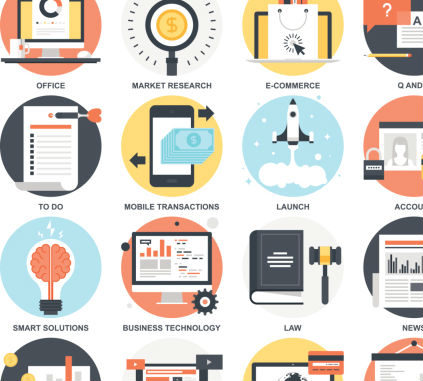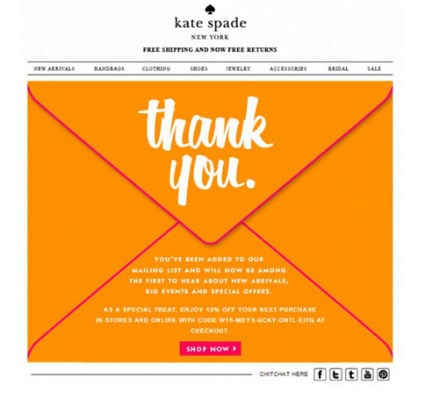 Tracy Vides is a digital marketing strategist who helps small businesses carry out content, email and social campaigns online. Tracy is also a prolific blogger – her posts are regularly featured on Tech Cocktail, Online Marketing Institute and Business 2 Community. Follow her on Twitter: @tracyvides.
Tracy Vides is a digital marketing strategist who helps small businesses carry out content, email and social campaigns online. Tracy is also a prolific blogger – her posts are regularly featured on Tech Cocktail, Online Marketing Institute and Business 2 Community. Follow her on Twitter: @tracyvides.
In our social media and SEO obsessed digital marketing generation, email marketing often gets the short end of the stick. Like children who are fascinated by shiny new objects, this “oldie but goodie” has been pushed to the back of the closet, to be dipped into only when you have nothing else on your plate.
Big mistake. In fact, email marketing happens to be one of the most efficient ways of reaching out to your target audience.
Email is Still a Marketing Superpower
According to McKinsey, email marketing is 40 times more effective at acquiring customers than Facebook and Twitter.
GigaOm’s research found that marketers consistently ranked email marketing as the single most effective tool for generating awareness, conversion, acquisition and retention.In fact, it is the only truly “owned” form of marketing a brand can carry out at near-zero cost.
Think about it: It costs you a good penny to acquire followers on social media. It then costs you more money to reach out to them via paid social media ads. The same goes for PPC ads. It costs you money each time you reach out to a user.
In contrast, once you acquire an email database and invest in an email marketing platform, it costs you NOTHING to reach out to a captive audience – one that signed up voluntarily to hear from you – over and over again.
So what can you do to make this fantastic tool even more potent? Here are some thoughts.
1. Get Personal with Your Users
The mention of email marketing brings to mind long email templates filled with offers and deals for products and services that a business sells. If we as marketers have this impression, how can we blame users for expecting the same?
But why not stir things up a bit? Since an email is the closest thing to a letter you can send someone today, why not write a real letter to your customers every once in a while? A personal email from a real person in your company – your CEO, Chairman, Head of Customer Care – that communicates with users about more than just the latest deal leaves users feeling important and closer to your brand. Reserve these messages for special occasions to avoid diluting their impact on your users.
For example, Ralph Lauren visits his subscribers’ inbox with a beautiful New Year greeting. A fine example of a conventional, yet personalized message – no gimmicks, just real class!

2. Respond to Users’ Stimuli with the Right Emails
The best kind of emails to send out are the ones that respond to your users’ behavior on your site. By following up a user action with an appropriate reaction from your end, you’re helping your users along in their journey towards a purchase. If you have an email database that runs into thousands of subscribers, it’s practically impossible to respond to each user with individual emails for critical actions they take. Enter automated emails, i.e. time-based or action-based messages. Data shows that such auto-triggered emails have open rates that are four times higher than regular newsletters.
And you can do that right from the very beginning of your relationship with your subscribers using “welcome” or “onboarding” emails.

The above email from Kate Spade assures users who’ve just signed up that they’ll be one of the privileged few to hear about offers early, and eggs them on towards their first purchase with a discount to boot.
By setting up auto responders, you basically define actions that a user takes to which you send out a specific set of emails. A new user signing up on your site, an abandoned shopping cart, an upcoming monthly subscription payment, or even a relationship milestone like a customer’s first anniversary shopping with your brand are all legitimate events or “triggers” to shoot out that auto responder.
3.Personalize Your Email Content
Today, it’s common practice to personalize emails with content that matters directly to the user. Most email platforms allow you to send out subject lines personalized with users’ names in them. You can also create distinct user segments within your database and develop dedicated email content for each segment to make your emails more relevant and laser-targeted.
Studies show that personalized emails apparently drive six times the transactions that mass emails do. These campaigns also showed open rates and click rates that were dramatically higher than regular emails. And yet, 70% of brands fail to cash in on this stupendous lift and do not personalize their email campaigns. Don’t add your business to that list. It’s a low hanging fruit that you simply must grab with both hands.
And if you’re a business based in the US, it’s even simpler to lay your hands on giant, targeted email databases relevant to your industry. An email personalization service such as TowerData can give you vast amounts of personal data about your customers, as well as clue you about their preferences such as alternative channels where they hang out and the best times to reach the
4. Always Be A/B Testing
Spend time and effort in polishing up your email campaigns by testing them before sending them out. Once you pick the best performing version of your email campaign, only then should you subject your subscribers with your marketing messages via email.
Some of the common elements of an email that can be tested include the subject line, the call to action, the images used and the content itself.
Analytics company Litmus shares its experience of A/B testing in this post.
According to Litmus, an A/B test on their call to action revealed 124% higher clicks on the CTA button and 75% higher clicks overall on the email body.
Similarly, A/B tests told Optimizely the best time to send out emails. Sending out emails at 4 P.M. Pacific Time, helped the company grow their click rate by 8.5%.
5. Optimize for Mobile Devices
If there has been one constant talking point in digital marketing over the last two years, it’s been the explosive growth of smartphones and mobile devices. While marketers are already moving to responsive or mobile optimized websites by the droves, precious little attention has been paid to mobile optimization for email campaigns, including delivery on mobile email clients, readability and usability on mobile devices and location intent based content.
Again, this apathy persists despite the numbers. While only 37% of all marketing emails sent out are optimized for mobile, Marketing Land reports that mobile devices now account for 45% of all clicks and 22% of all revenue generated from email marketing. The writing on the wall is clear: Move on to mobile optimized emails or stand to lose nearly half of all the clicks that your email campaigns stand to potentially get.
Are you ready to kick your personalization strategy into full gear? Discover how Email Intelligence can help you exceed your goals with a free email intelligence test!
{{cta(‘aeeedda0-56cf-42d8-b598-04d6c53ce822’)}}
 Affiliate Marketing
Affiliate Marketing Automotive
Automotive eCommerce and Retail
eCommerce and Retail FinTech
FinTech LeadGen
LeadGen Nonprofit and Political
Nonprofit and Political Payments
Payments Technology Platforms
Technology Platforms Tourism and Hospitality
Tourism and Hospitality
 Tracy Vides is a digital marketing strategist who helps small businesses carry out content, email and social campaigns online. Tracy is also a prolific blogger – her posts are regularly featured on Tech Cocktail, Online Marketing Institute and Business 2 Community. Follow her on Twitter:
Tracy Vides is a digital marketing strategist who helps small businesses carry out content, email and social campaigns online. Tracy is also a prolific blogger – her posts are regularly featured on Tech Cocktail, Online Marketing Institute and Business 2 Community. Follow her on Twitter: 

